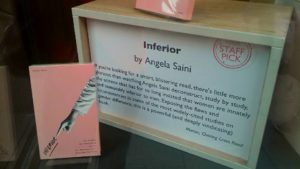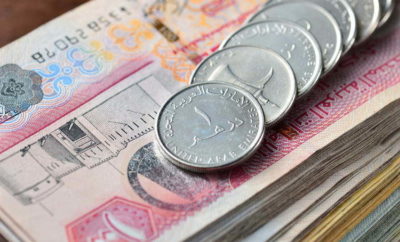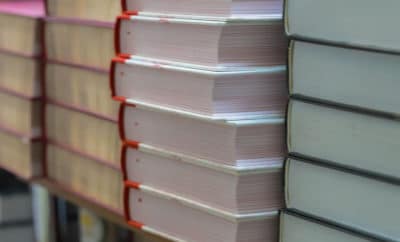Books
Angela Saini Shows Feminism And Science Need Not Be Strangers

Angela Saini
London-based writer Angela Saini talks about her book, Inferior: What Science Got Wrong About Women.
After having an upsetting encounter in a women’s meeting where she was told that women’s inferiority was based on “scientific principles”, Caroline Kennard, an active member of women’s movement in Boston, wrote to Charles Darwin, hoping for assurance.
With groundbreaking On The Origin of Species and The Descent of Man behind him, the acclaimed scientist wrote back: “There seems to me to be a great difficulty from the laws of inheritance, (if I understand these laws rightly) in [women] becoming the intellectual equals of man.”
Kennard’s response was furious: “Let the environment of women be similar to that of men, before she be fairly judged, intellectually his inferior, please.”
Doesn’t this argument sound familiar? It is an episode London-based journalist and science writer Angela Saini recounts in her latest book, Inferior: What Science Got Wrong About Women. Saini first faced the issue at the signing of her first book, Geek Nation in 2011. She was cornered by a man who asked her: “Where are all the women scientists?” He went on to say: “Women just aren’t as good at science as men are. They’re just less intelligent.”
While Saini fought back, she wished she had scientific arguments in her armory. Then she set about researching for Inferior: What Science Got Wrong About Women, which came out earlier this year. She tells Little India: “I was driven first and foremost by the wish to know myself better. We are fed so much strange and contradictory information about sex differences and female biology, and I just wanted the facts. I approached it as an investigative reporter, trying to root out the details and get behind the research — even if I may not like the answer I may find.”

Her balanced journalistic temperament sets the book’s tone, which features important research that fed the stereotypes of sex differences, scientists who tried to replicate those researches, and those who opposed it. The book talks of sex differences from cradle to old age: from supposed preferences in colors, to what different brain sizes actually mean, to menopause, all the while shattering long held “facts” and introducing debates around them in scientific community.
What the book drives home is that what science understands about women, like Charles Darwin and the many men who led research, is faulty. That researchers often fitted the evidence to their theories — theories that come from a place of preconceived notion and bias influenced largely by the society they lived in.
As more and more women are coming to science, new perspectives are being brought to light. With newer perspectives, there are more avenues for research and more ground to cover. For example, the notion that females are coy and sexually demure while men are promiscuous. Saini points out, with various examples of mate guarding seen in the wild and how that translated in human cultures as enforcing modesty via practices such as female genital mutilation. “Female sexuality had been suppressed for so long that scientists didn’t even question whether this modesty and meekness might not be biological at all.”
However, the “choosy not chaste” notion of female sexuality came from fieldwork on langurs done by scientist Sarah Blaffer Hrdy. Sometimes, in primates, strange males often kill infants so as to have the females sexually available for mating again. To prevent this, female langurs mate with as many males as possible, putting the paternity in question. This ensures her infant’s survival. Hrdy’s conclusion and research are no doubt influenced by her gender. As Inferior makes the case for over and over again — multiple perspectives correct blindspots.
As Saini puts it in a podcast for The American Scholar: “One of the reasons science is improving when it comes to sex and gender is because society is improving when it comes to sex and gender. It is just so much more aware of issues like intersex, transgender, and homosexuality. Gender seems to be a much more fluid thing now, in fact, sex itself is a much more fluid thing. There are people who fall between the two binaries of XX and XY and we all have different levels of hormones. We are starting to get a lot more nuanced about the way we think of men and women.”
Born and brought up in London, the 36-year-old writer, a self-confessed geek, lived for short periods of time in Delhi and Boston. “I studied engineering at Oxford University and became a journalist straight after graduating,” she tells us, adding that she started freelance writing around eight years ago to focus on science.
Saini has written on subjects she has covered in the book for various publications: female sexuality, contraception, mate guarding, menopause, pathbreaking scientists and how feminists should end their distrust of science. She has even written a piece on the growing trend of modesty in fashion, expressing her concern over historical origins of the veil.
When asked about a potentially thorny subject, even in modern feminism, about wearing a veil, she minces no words: “I would never deny any woman her agency. If she chooses to cover up, she should be allowed to do so. I do also strongly support those women around the world who forced to wear veils against their will, and very young girls who are expected to wear it by their parents.” Veiling a child is wrong, she says, pointing out that a historical understanding of the origins of the veil is important. “It was designed to be a tool of patriarchy, to separate respectable women from the not respectable. So I worry when religious groups make women believe that modesty is necessary to demonstrate their devotion, when really it was always designed in the interests of men.”




You must be logged in to post a comment Login